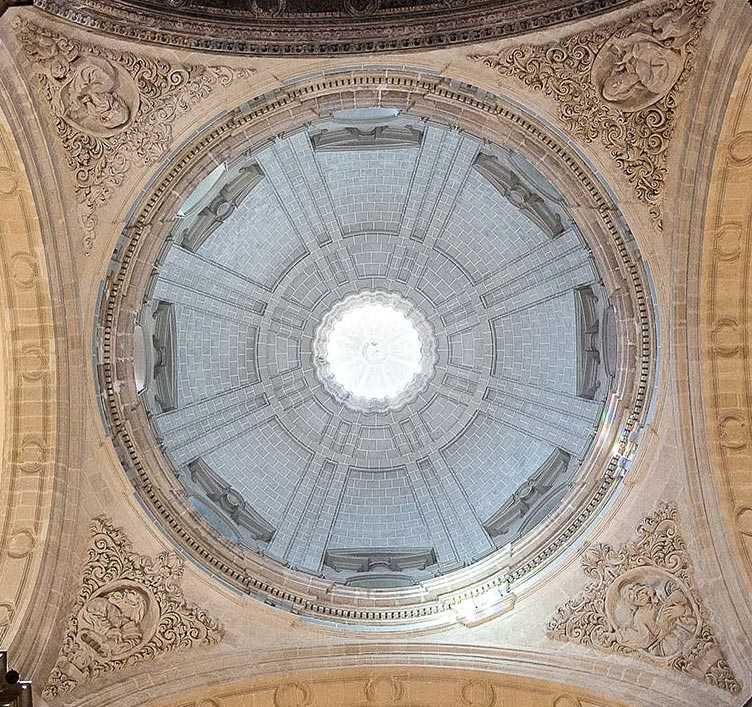
IN THIS SECTION:
Dome and Stained Glass
Dome
When the scaffolding was dismantled and the great dome was seen from the transept, it made a great impression on both the canons of the Collegiate and the faithful. The canons themselves did not hesitate to affirm that it was the best in Spain. Leonardo de Figueroa was a great dome builder, leaving examples of his work in several churches in the city of Seville.
The dome was the last thing to be built in the baroque collegiate church, when the entire building was practically finished. If in the rest of the building stone was used as a construction element, in the dome, due to the precarious economic situation of the chapter of the collegiate and, after ensuring that the change would not pose any danger of collapse, they decided to reduce costs and replace the stone with brick.
Through the windows of the lantern, natural light enters and falls through the dome creating the illusionistic effect of the celestial vault.
The lantern is topped with the cross of the Order of St. John of Malta and was a tribute to Cardinal D. Manuel Arias y Porres, archbishop of Seville. In 1734 he finished the decoration of the pendentives composed of a multitude of leaves and scrolls that frame ovals where the four evangelists are represented writing the holy gospels and are accompanied by their symbols.
Stained glass
From the central nave, you can enjoy a new and wonderful panoramic view of the three naves of the Collegiate Church, probably full of color that is distributed by pillars and altarpieces, due to the reflection of the stained glass windows inside the temple.
The current stained glass windows are not original; when the temple was inaugurated in 1712, the windows were adorned with entirely transparent glass, arranged in geometric figures such as hexagons and squares. This type of stained glass allowed a lot of natural light to enter the temple, thus trying to create in the viewer the optical illusion of the divine that radiates light and illuminates the entire space. Over time, the church was darkened by placing curtains on the windows and reinforced by the darkening of the stone of the pillars and vaults due to the smoke from the candles that were lit daily.
It was the Dukes of Montpensier who, in 1870, in order to give more color to the temple, sponsored the construction of the current stained glass windows. The stained glass windows that can be seen are formed by stained glass with floral and starry motifs, imitating the Hispano-Muslim style, and leaving a central hole to place the emblem of the Collegiate, the ball of the world crowned by the cross.



